Multi-Sensory Learning
Explorations with Multi-Sensory Learning
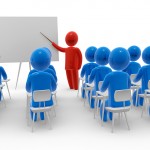
In a previous post we discussed the seven intelligences of accelerated learning. Although this was quite a comprehensive analysis of how one should approach learning, it however did leave out some important steps that will help you enhance your study time.
Today we will focus on how to accelerate your learning ability using three primary sensory methods of learning. In addition to this we will look at specific strategies and tactics that you can utilize immediately to enhance your understanding of information. Along the way we will also briefly touch upon how to utilize effective questioning methods in order to accelerate your learning potential to even deeper and more profound levels.
Some of the study tools and methods discussed within this post do crossover with the seven intelligences of accelerated learning, however I will attempt to present them in a new light and from a slightly different perspective. I am hopeful that by the end you will have a very thorough grasp and understanding of this material and you will be able to utilize it to dramatically improve your personal study habits and skills in surprising ways.
Learning through the Senses
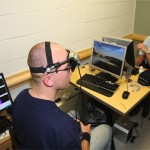
Most of us go through our academic years without fully utilizing our potential as intelligent and creative human beings.
We are all gifted with the ability to learn and absorb new pieces of information in so many surprising ways. However, most of us never fully realize this, and therefore struggle with ineffective methods of learning that lead to feelings of inadequacy and self-doubt.
If you have ever struggled to find the creative spark that would propel you towards new learnings and understandings, then it could mean that your approach to learning has been somewhat ineffective, and has lead you down the path of frustration and procrastination.
Within this section you will discover that the doors to learning are always wide open and accessible. There is a means and ways to learn any type of information or subject as long as you are aware, and utilize effective multi-sensory learning strategies that will help you to accelerate your learning potential.
The Process of Remembering

How we choose to think at any given moment in time is as important as the learning strategies we choose to use.
Learning studies have consistently shown us that when we approach learning from a creative perspective that involves more then one of our sensory organs, that we can profoundly enhance our retention and recall of information.
Now, I’m not sure of the accuracy of these statistics, however studies have shown that we remember 20% of what you read, 30% of what you hear, 40% of what you see, 50% of what you say, and 60% of what you do. Of course this will somewhat vary from person-to-person depending on their sensory learning preferences, however based on personal experience with learning, it seems to be pretty accurate.
What these results are actually telling us, is that the more we interact with the information we are learning, the greater amount of information we will retain and hold onto over an extended period of time.
Reading is on the bottom of this list as it requires little involvement. However, doing is at the top of the list with a 60% retention rate because it is a multi-sensory activity that utilizes many sensory cues in order to stimulate the brain in creative ways.
If we were to incorporate all of these methods (reading, listening, seeing, saying and doing) into the learning process, then you may surprisingly find that your retention levels rise above 90%.
Types of Learners

We have five physical senses and a mysterious 6th sense that can also be utilized for learning.
Your sense of sight, hearing, touch, smell, and taste are critical when it comes to improving your methods of learning. Each sensory cue within itself can dramatically enhance your learning experience, and provide you with extra support that will improve your memory and recall of information.
Science has shown us time and again that we never actually forget anything that comes through our five sensory organs. These memories are intrinsically ingrained into our psyche at a deep unconscious level. In fact, this is why under hypnosis many people find that sensory memories lying dormant for decades suddenly come to the forefront as through they just occurred yesterday. These types of memories are often very vivid because they are being experienced in multi-sensory ways, meaning that the person with the memory can see, hear, feel, taste and smell the experience from a wide variety of perspectives. And within this lies the key to your success as an accelerated learner.
For the purpose of this discussion, we will take a look at the three most utilized senses that will help to improve your study skills. However, please keep in mind that you will naturally have a preference for one sensory learning method over the others. Identify which one it is and approach your learning by focusing on this sensory organ to begin with. Only once you have a good understanding and grasp of the topic area should you vary up your approach and begin focusing on alternate methods that incorporate the other two primary sensory organs.
Here is a brief description of the three main sensory cues to get you started:
Visual Learners

These types of learners enjoy using their eyes to learn and remember pieces of information. They are very visually-oriented individuals, thinking in pictures, colors, and shapes. They enjoy visualizing and using their imaginations to think about and recall the information they are learning. Are you a visual learner? If you are, then you will appreciate the magic of visual thinking.
Auditory Learners

These types of learners enjoy using their ears to learn and remember pieces of information. They are very listening-oriented individuals, thinking in sounds, music, and tones. They enjoy listening to audio recordings and utilizing their voice to recall the information they are learning. Are you an auditory learner?
Physical/Kinesthetic Learners

These types of learners enjoy using their feelings to learn and remember pieces of information. They are very physically-oriented individuals, thinking in shades of emotion and through physical movement and involvement. They enjoy contemplating and role playing aspects of the information they are learning. Are you a physical kinesthetic learner?
Advanced Multi-Sensory Study Tactics
Advanced multi-sensory learning is very much a creative journey where you naturally identify your strengths and weaknesses that will assist you with selecting the learning methods and strategies that will best suit your personality and learning style.
Within this section we will delve into the intricate specifics and details of the multi-sensory learning study process. The techniques and strategies presented here will provide you with a variety of approaches you can take when learning your study materials.
Keep in mind that every method will not be ideal to your learning strategy, however it is important to think flexibly and approach every subject and topic you are learning with an open frame-of-mind — tackling every piece of material in a new way, while incorporating as many of your learning sensory organs as possible.
Please be sure to think outside the box as you are reading these strategies. Each of them are presented from my personal angle and perspective, and they can easily be adjusted and tweaked to suit your personal preferences and learning style.
Make Your Information Memorable
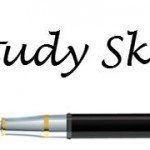
In order to get the most out of your multi-sensory study time, it is absolutely critical that you follow a few simple guidelines that will help you to expand your focus, awareness and memory of the information you are learning.
Here is a brief overview of each of these guidelines as they pertain to the three primary sensory learning styles:
Visual Suggestions
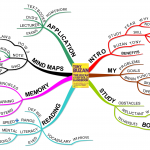
When learning through a visual means and while incorporating visual learning strategies it is important to ensure that your visual learning experience is bright, close, colorful and funny.
As visual learners we naturally remember and recall information easily that is designed in a memorable and vividly imaginative way.
As you are working through the visual learning strategies presented within this post, make sure that you incorporate brightness, closeness, color and humor into your study regime. This will not only improve each of the study strategies you have chosen to pursue, but will also dramatically enhance your memory and recall of information.
As a final thought, while you are working through the visual study strategies, ask yourself the following questions:
How can I make this information brighter so that it stands out more readily in my mind?
How can I bring this information closer so that I am completely engrossed within its influence?
How can I add more color in ways that will further enhance my memory and recall?
How can I create and build humor into this information, thusly making it standout in my minds-eye?
Auditory Suggestions

When learning through an auditory means and while incorporating auditory learning strategies it is important to ensure that your auditory learning experience is funny, loud, and unique.
As auditory learners we naturally remember and recall information easily that comes across in a memorable and vividly unique way.
As you are working through the auditory learning strategies presented within this post, make sure that you incorporate volume, uniqueness of sound, and humor into your study regime. This will not only improve each of the study strategies you have chosen to pursue, but will also dramatically enhance your memory and recall of information.
As a final thought, while you are working through the auditory study strategies, ask yourself the following questions:
How can I add humorous sound effects, music and voices to the information that I am learning in order to remember it more readily?
In what creative way can I increase the tone and volume of this strategy in such a fashion that will enhance my memory and recall of this information?
How can I make the sound effects, music and voices unique in such a way that it automatically enhances my thinking and awareness?
Physical Suggestions
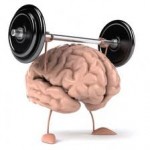
When learning through a physical means and while incorporating kinesthetic learning strategies it is important to ensure that your physical learning experience has unique feelings associated with it, and is of a high emotional intensity.
As physical/kinesthetic learners we naturally remember and recall information easily that comes across in a memorable and vividly unique way.
As you are working through the physical learning strategies presented within this post, make sure that you get all your emotions involved within the process, and that you seek-out unique and memorable feelings that will expand your thinking and awareness. This will not only improve each of the study strategies you have chosen to pursue, but will also dramatically enhance your memory and recall of information.
As a final thought, while you are working through the physical study strategies, ask yourself the following questions:
How can I add a greater amount of emotional intensity into my study time?
How can I enhance the positive emotional tension of this learning strategy in such a way that will allow me to better remember the information I am studying?
What kind of unique experience and feeling can I draw from this strategy that will further enhance my memory and recall?
Physical Sensory Learning Strategies
The strategies presented here will help you to zero-in and enhance your physical/kinesthetic learning ability.
If this is your favored learning approach, then you should concentrate 70% of your study efforts utilizing the strategies presented here. The other 30% should be spent on incorporating some of the strategies contained within the other two sensory learning modes.
Walking for Improved Memory and Recall
As a physical learner, you naturally favor movement over sitting or standing while you are learning. In order to use this to your advantage you must effectively incorporate some form of movement throughout your study regime. Walking while you are reading your notes is a good place to start. This naturally helps you to zone-out all outside distractions and focus in on the material you are studying. However, you must take care to make your movements steady, moderately paced and repetitive.
You will learn quite effectively while slow walking, however your learning curve will drop dramatically the moment you begin to increase your pace. You must find a comfort zone, where your breath is comfortable and is perfectly aligned to the rhythm of your body and the movements you are making.
If you are reading aloud, make sure that this is also done within a rhythmic pattern that is consistent with your movements. Our bodies are naturally drawn to rhythm on a subconscious level. This is why it is paramount that you create a comfortable walking/moving rhythm for an extended period of time while you are studying. Over time, this movement will naturally become anchored to your psyche in such a way that it will automatically trigger your body and mind to enter a deep and profound learning state that will allow you to recall information in rapid succession.
Other movements that may also be helpful include spinning slowly on a chair, rocking back and forth on your seat, or gently jumping up and down on a trampoline. In the end it doesn’t matter what method you use, as long as it is consistent, rhythmic and naturally moves you into a deeply profound learning state.
Be Dramatic in Your Approach
As a physical learner, you will learn far more rapidly if you approach your studies in a dramatic humorous fashion.
You should essentially see yourself as a slapstick comedian piecing the information you are learning in a memorable and unique way that will naturally stimulate your mind and enhance your learning ability. Use dramatic actions to act out the information you are studying, utilize props and other tools to further enhance the realism of your dramatic performances, and also consider recruiting a partner who can support you within these roles.
Your imagination is your only limitation, and your acting skills are absolutely irrelevant when it comes to winning your first Academy award. ![]()
Role Play the Topic Under Study
Role playing what you are studying in ways that focuses you on teaching, debating or discussing the topic with others is an ideal way to learn.
As a physical learner you become very emotionally involved in the everyday actions you take and decisions you make. As such, it is of primary importance that you incorporate these same feelings and emotions into your study regime. For instance, getting into a heated emotional discussion with someone about the topic you are studying, will help enhance and expand important concepts within your mind.
Teaching another person about the topic you are studying will assist you with gaining new insights and understandings from a perspective you may never have considered. In this situation you will be forced to physically explain concepts and ideas in such a way that will help a novice fully grasp the topic under question.
Finally, debating your topic with someone will present you with emotional as well as logical challenges that may stimulate new avenues of thinking in unexpected directions.
No matter which of these methods you choose, it is important that you incorporate a little bit of drama, and completely lose yourself within the experience you have created.
Utilize a Study Partner
All the above physical learner study skills can be enhanced and improved upon by hiring the services of a study partner who is able to bring out raw emotional feelings and experiences from within your heart.
Hire someone to help you lose yourself completely within the topic you are studying, and their time will pay dividends with your academic achievements.
Auditory Sensory Learning Strategies
The strategies presented here will help you to zero-in and enhance your auditory learning ability.
If this is your favored learning approach, then you should concentrate 70% of your study efforts using the strategies presented here. The other 30% should be spent on incorporating some of the strategies contained within the other two sensory learning modes.
The Musical Method for Perfect Recall
As an auditory learner, your primary form of learning comes through your ears, and therefore rhythm becomes a critical component of your learning strategy.
If you are able to find a rhythm and stick to it for an extended period of time, you will enter what is known as your learning zone where every piece of information is meticulously cataloged for quick and easy recall when you need it most. Learning becomes effortless and easy within this zone, however in order to get into this zone you must first find your rhythm.
Because you are an auditory learner, the best sense of rhythm is found within music. The right type of music with the ideal pitch, tone, volume and beat, will automatically trigger this deep and profound state of learning.
Now, in order to determine this ideal piece of music, you must pay attention to the everyday sounds that help you to zone-out of reality and into a state of being that transcends the physical world. If you a true auditory learner, then you probably know what I mean. Once you have found this piece of music or rhythm, then it is your duty from that moment on to utilize it as a background study tool while you are learning.
As a final thought, whatever piece of information you choose to learn must be processed and communicated within this specific rhythm. This means that if you are reading something aloud, you must find ways to articulate yourself within the rhythm of the music you have chosen for your studies.
Music without any words is probably the best alternative. Or a repetitive song in another language may also do the trick. The key is to lose yourself within the rhythm and beat of the melody.
In the future, as you continue to progress with this method, you will find that every time you hear this song or melody it will naturally and instantly trigger you into a deep learning state — just like infants who are entranced by the sound of their mother’s heart. Rhythm is the key.
Speak Up and Remember
As an auditory learner, you remember and recall information best when it is spoken rather then when it is read or visualized. As such, you must always incorporate your voice into your learning regime. This could simply mean reading your notes aloud, paraphrasing what you have learned into a microphone, or simply talking to yourself about the subject material you are studying.
As you talk to yourself, actually stimulate a conversation between your curious mind and logical mind. Your curious mind will be asking all the most insightful and thought provoking questions about the material you are studying aloud for all to hear.
Once the questions have been posed, your logical mind will do its very best to answer these questions in the most logical and intellectually Analytical way. However, your curious mind is always very curious, and so the questions never letup and the conversation just keeps moving deeper and deeper into the topic under question. It’s somewhat like Bart Simpson sitting in the back seat of his family car, continuously asking Homer Simpson “Are we there yet… Are we there yet?” Now, even though Homer lost his patience after only a few questions, your logical mind must always be within it’s zone — thinking of as many creative and thought provoking answers that will hopefully one day, quieten your curious mind’s unending curiosity. ![]()
Have fun with this approach, and you will gain a plethora of new insights and understandings that you may never expected.
Digital Recordings for the Digital Mind
Since you are already expressing your thoughts aloud, it just naturally makes sense to digitally capture your voice and listen to it at a later time.
As an auditory learner you will find great benefit listening to your own voice. It’s very much like your subconscious mind talking back to you and helping you to understand the subject your are studying in great depth and detail. However, don’t just record your voice, actually go about the process in a creative way. For instance, record your voice over the rhythmic music that you identified above.
Another example is to record your voice in a way that will lull you into a deep meditative resting trance. This is best achieved when you utilize a background beat and a low tone and pitch.
Slowing down the pace of your recording slightly, may also help integrate the information you are trying to learn at a deeper and more profound level. The key here again is to be creative and to thoroughly know and understand your rhythm and natural habitual tendencies of learning.
Also bear in mind that you could use different types of recordings that you listen to throughout your day while on the bus, in the car, riding a bike, taking a shower, or just as you nod off to sleep.
The different recordings you create should effectively mimic the rhythm and energy levels that you will naturally be feeling throughout that specific part of your day while you are listening to the recording. Initially this might seem like a lot of work, however, once you have established how you will be going about things, it will naturally all fall into place. Again use your imagination, and have fun with this process.
Karaoke Your Way to Accelerated Learning
This is all about creating rhymes and jingles to a melody and beat that is familiar and pleasant to your ears.
Actually go out and purchase your favorite songs in their karaoke versions. Prepare your most important notes in advance (these are the notes that are critical to your understanding of the subject materials) and have them ready to read in front of you as you begin playing the karaoke music.
As the music progresses along, make adjustments and align your notes (the words you read) in such a way that will naturally blend in with the rhythm, verses, chorus and beat of the karaoke song you have chosen. Yes, I actually mean taking your study notes and inserting them into the chorus, verses and bridge components of the karaoke melody.
Once you have finished, simply take your study notes and stand in front of a mirror and perform your song and dance with the new lyrics that you have just created. Go ahead, have some fun… don’t be bashful, there’s probably no one watching. ![]()
This could well be one of the most effective and powerful auditory learning methods for accelerating your learning potential. It works extremely effectively because yet again you are bringing the notes you are studying into a familiar rhythm that is naturally appreciated and deeply ingrained within your psyche. Later, when it comes to writing up your examinations, see if you can stop yourself from singing your way to the top of your class. ![]()
Visual Sensory Learning Strategies
If this is your favored learning approach, then you should concentrate 70% of your study efforts utilizing the strategies presented here. The other 30% should be spent on incorporating some of the strategies contained within the other two sensory learning modes.
Post-IT for Improved Memory and Recall
As a visual learner, you look for every visual cue you can find in order to help you remember key pieces of information. A great method to do this throughout the day is to utilize post-it notes.
Purchase a variety of colored markers and write out key important notes (with associating and visually stimulating pictures) that will standout in your mind. Once your notes have been created, simply stick them up everywhere!
Stick them up next to your computer, on the refrigerator, kitchen table, bathroom mirror, next to your bed, around your shower, in your car, and anywhere else that you can think of that will keep important visual cues at the forefront of your mind at all times.
This is a very simple strategy, however, for key important pieces of information it could well be one of the most effective techniques you use to improve your memory and recall of information.
Visualize Yourself Using Information
The imagination of a visual learner is one of their greatest assets. Your imagination holds the key to unbelievable insights, understandings and reflections that could very well make a significant difference to your outcomes.
Spend time each and every day physically visualizing in pictures the topic you have been studying.
There is a means and way to turn every topic into a profound visual experience in your mind’s-eye, you must however be open to the possibilities and utilize your creativity effectively to bring these images to life.
While visualizing these scenarios in your mind, make sure that they are big, funny, colorful and bright in ways that will assist you with better memory recall. Moreover, adding dramatic and memorable movement to your visualizations will further enhance the learning process.
Please remember, not to allow your imagination to limit the possibilities here. Boring and dull images in your mind will simply not be remembered as clearly as exciting, fun and colorful images will.
Think about how you can perform this visualization in a creative and effective way that will leave a lasting impression on your mind. Maybe you could turn everything into your favorite cartoon or movie? Or you could use famous actors and characters to perform in your visual experience. You could even have animals and trees acting out all the parts of this visual journey, or simply put yourself into a fantasy world where anything goes. They key again is to make it memorable, entertaining and fun.
Create Mental Storyboards
This is closely tied into the process of visualization, however it involves creating mental storyboards within your mind as you make progress through the learning process.
Think of a mental storyboard as very much like something that writers create for a movie or television series before it is filmed. For them the process involves drawing how they imagine each scene of a movie unfolding in a comic-book type of format. This works quite effectively as it puts the bigger picture into perspective and also opens new insights and understandings about how the story should unfold.
For the purpose of accelerating your learning, mental storyboards will assist you with creating an ongoing picture-story-book within your mind about the information you are studying in such a way that will help you to more thoroughly understand the topic under study.
Begin by reading a paragraph, page or a topic one section at a time. At the end of this section, close your eyes for a moment and create a snapshot picture of the topic that is vivid and memorable. Make this picture bright, colorful and all encompassing. Focus on the image for a few moments, and then store it away in your mind.
To assist your memory further with this process, simply jot down a rough sketch of the mental picture on a piece of paper and use it as a bookmark for that page of the textbook. The next time you move through your notes you will come across this picture and it will bring back a flood of memories about the page or topic under question.
Again, it is very important to use a free-flexing imagination that will allow you to think creatively about the topic you are studying.
Create Intertwining Flow Charts and Mind Maps
As a visual learner you very much enjoy thinking in interconnecting systems and processes. You naturally enjoy seeing associations and connections between different objects, which helps you to better understand the material you are studying.
Utilize flow charts and mind maps in order to connect different aspects of a topic together in creative ways that make sense in your mind.
When I read a topic and try and create a mind map from this information, I don’t often follow the topic structure presented within the text. Instead, I create my own connections bringing together seemingly unrelated pieces of information into a cohesive format that makes sense to me. As a result I wouldn’t suggest that you stick to the structure of the topics or subject you are studying. Create your own headings, sub-headings, major and minor points, interconnecting them together in ways that will enhance your understanding about this topic.
Create Flashy Pocket Cards
Similar to post-it notes, it is handy to utilize pocket cards as reminder tools that will help you to keep the most important points at the forefront of your mind at all times. Whenever you get a moment of time to spare, you can always refer to them, and therefore keep your mind and attention on the pieces of information that are most important to you.
Create Diagrams and Pictures of the Material
If you are artistically inclined (or not), then this may very well be the most effective study strategy that will help you to accelerate your learning potential.
Take out your colored pencils, crayons, pens, highlighters and makers, and draw quick sketches of the material you are learning. You are effectively creating a physical storyboard of each topic (not a mental storyboard as previously discussed). Again, be creative with your approach and utilize themes, characters, cartoon heroes, or simple stick figures. It doesn’t matter what you do, as long as it sticks and ingrains itself into your psyche.
Finally, in order to further expand your understanding and awareness of the material you are studying, it may be helpful to recreate the diagrams, pictures, cartoons and graphs presented within the book in your own unique way.
Read like a Child in a Playful and Creative Way
Finally, visual learners will find it helpful to interact with their reading material in a childlike manner.
Do you remember the days when you were young and you drew pretty little pictures, shapes, and lines on your bedroom wall? Well, this is somewhat the same method you should be using to learn new pieces of information.
The next time you sit down to read a book, create a process and method of remembering that you will utilize from that moment onward. Simply develop a process and system for your scribbles, underlines, highlights, colors, symbols, arrows and line linkages.
Everything must have a consistent reason and purpose for being that defines the way you learn and study.
Initially it might take a little time to develop the process that you will use, as you must decide how and under what specific conditions you will utilize each of these written methods. However as you gain experience it will become one of your primary tools that will help to accelerate your learning potential.
Logical Study Suggestions
Here are some additional study tools and strategies that were left out of the seven intelligences of accelerated learning:
Learn in Logical Steps
This is pretty much the way that most of us are taught to learn, and it is in fact a very effective means of learning new pieces of information that you may not be too familiar with.
Essentially we must all begin the learning process by taking simple and proactive logical steps through the topic we are studying.
Learn out of Sequence
Once you become more or less familiar with a subject, you will be ready to begin learning out of sequence. In fact, learning out of sequence is incredibly important when it comes to your examinations.
During examinations you will find that you are being confronted with the same topics in a strange ordered sequence that just doesn’t make any sense. If you do not adapt quickly to this right-hookthen you will suffer the consequences and go down for the count. As such you must prepare yourself for the unexpected by learning the material you are studying out of its regular sequence and order. This can be achieved by reading the material back-to-front, by dipping in and out of chapters, and by simply reordering your notes in such a way that it creates momentary confusion.
The important point here is that you must not allow your brain to become comfortable with a standard pattern of learning the information you are studying. Instead stimulate and challenge your brain in unexpected ways by studying out of sequence. It will most sincerely thank you when the time comes to do your examinations.
In many ways, it is much like an athlete training for a competition. They won’t only train one way, but rather will put their body through a variety of workouts to ensure that they are ready for anything that comes their way when the day of the competition or event is upon them.
As a final thought, you could separate your notes onto individual flash cards that can be shuffled before beginning the learning process.
Focus on Small Chunks of Information
It is easy to become overwhelmed very quickly with topics that are at first difficult to grasp or understand. In such cases think about your topic as a large chunk of information. This large chunk is made up of smaller chunks, and those smaller chunks are composed of even smaller chunks and so forth. Take time to break your topic down to the smallest possible chunks you can manage. Once this has been successfully achieved, simply isolate each chunk into easy, intermediate, and difficult to remember categories.
Begin by first tackling the chunks that are within your easy category. Take them apart and piece them back together utilizing any of the sensory study skills you have been introduced to within this post. Once completed, do the same for the intermediate chunks. And finally, tackle the difficult chunks in the same fashion.
You may very well find that by having tackled each of the prior chunks successfully that you will now have enough knowledge, understanding and experience to also tackle the difficult chunks with relative ease.
Learning is a process, however it must be a process that you control, and not allow it to control you.
Summarize What You Know About the Topic
This is a very simple and a very much overlooked learning strategy.
After learning a topic segment, simply take some time to either summarize your topic on paper, role play it, or record it. Identifying what you now know about the topic, will dramatically enhance your long-term memory and recall of the information under study.
Please do not forget about this process as it is of primary importance if you seek to accelerate your learning potential.
Learning through Effective Questioning
Knowing how to ask effective, solution focused and stimulating questions will propel your knowledge and understanding about any subject into the stratosphere.
Effective questioning strategies are important in order to enhance and advance any aspect of your life, including your learning potential.
Within this section you will discover how simple and carefully thought through questions can literally open the doors to new learnings, profound understandings, insights and experiences that can dramatically accelerate your learning potential and knowledge about any subject area.
The questions you utilize are a natural compliment to your multi-sensory learning strategies as they provide you with solution-focused methods that will open your mind to the possibilities and help you to further expand your thinking and awareness about the information you are studying.
The Purpose of Effective Questioning
Asking effective questions focused on solutions naturally helps to stimulate confidence, improves thinking ability, encourages curiosity, and enhances the learning process in unimaginable ways.
Without questions, you have absolutely no hope of becoming an effective learner.
Questions are the keys that will open doors of knowledge and understanding that would normally be hidden from your view. Take them seriously, ask them religiously, and you will soar to the heights of academic greatness.
Questions Separate the Genius from the Masses
Yes, this indeed is true. In fact it could be the most important key fundamental ability that separates a highly intelligent person or student from the rest.
By asking the right kinds of questions, you will naturally stimulate the brain to think in unique and creative ways that will expand the possibilities and move you beyond fixed-beliefs that riddle the mind and limit its potential.
Many beliefs that we hold within our psyche are simply there because we fail to pose the questions that will break us free of their stranglehold over us. The same applies to learning.
If ever you are stuck and unable to break through an obstacle along your path towards successfully learning a subject or topic, then simply take a timeout, separate yourself from your study environment and on a piece of paper jot down as many insightful and thought-provoking questions you can think of that will expand your thinking and awareness about the topic you are studying.
These questions must be stated positively and focused on solution oriented thinking that will help you to find answers to the learning roadblocks that you are currently facing.
If while undertaking this exercise, you find that you become stuck on a specific question, then simply take out another piece of paper and begin asking questions about that question.
Over time, as you become more proficient, you may miraculously find that your intelligence has suddenly skyrocketed as you seem to be coming up with answers, insights and new ideas without having to breakaway from your studies in order to write out these questions.
Try this strategy, and you may be pleasantly surprised how effective it can be in accelerating your learning potential.
Key Questions that will Get you Started
You should ideally create a list of questions and keep them beside you at all times throughout the study process. This list of questions must be very generic, and should focus on areas that will expand your thinking about the topic and subject you are studying.
Ideally you should have a list of problem solving questions, creative thinking questions, and critically thinking questions that you can refer to at a moments notice to help you break through learning slumps.
To get you started here are a few questions that will stimulate your thinking as well as your levels of motivation:
How can I apply this information?
In what specific way can this information be best applied into my life?
How can I put this information into my own words?
How must I think about this material in a creative and solution focused manner?
How can I utilize this information within this very moment?
How do all these pieces fit together when looking at the bigger picture?
Pose Thought Provoking Questions
To put closure on this topic, consider asking questions that naturally focus you on only the key and important points of the topic you are studying.
Ask questions that help you to validate the material.
Ask questions that assist you with thinking outside the box by looking at possible assumptions and insights that you might not have noticed before.
Ask questions that help move and motivate you to learn at deeper and more profound levels.
Utilize Curiosity Throughout Your Studies
Finally, I just want to point out how important it is that you utilize these questioning strategies throughout your study regime. This actually means asking specific generic and topic related questions before you begin studying, during your studies and even after you have completed your studies.
The questions that follow your studies are expansive learning questions that will help you to gain new insights and understanding into the personal learning process. You can utilize the answers you obtain from these questions to further accelerate and improve your study methods and skills in the future.
Final Thoughts
Our sensory experiences are magnificent things that we must cultivate and utilize to further our academic success at school, in business and throughout our lives. They are tools we have been gifted with that naturally connect to our thinking brain to help expand our awareness and understanding about the world and the information we are studying.
I hope you enjoyed this post. If you have any further learning strategies and tactics that have worked for you, then please feel free to jot your thoughts down within the comments section below.
source:
http://blog.iqmatrix.com/multi-sensory-study-skills


